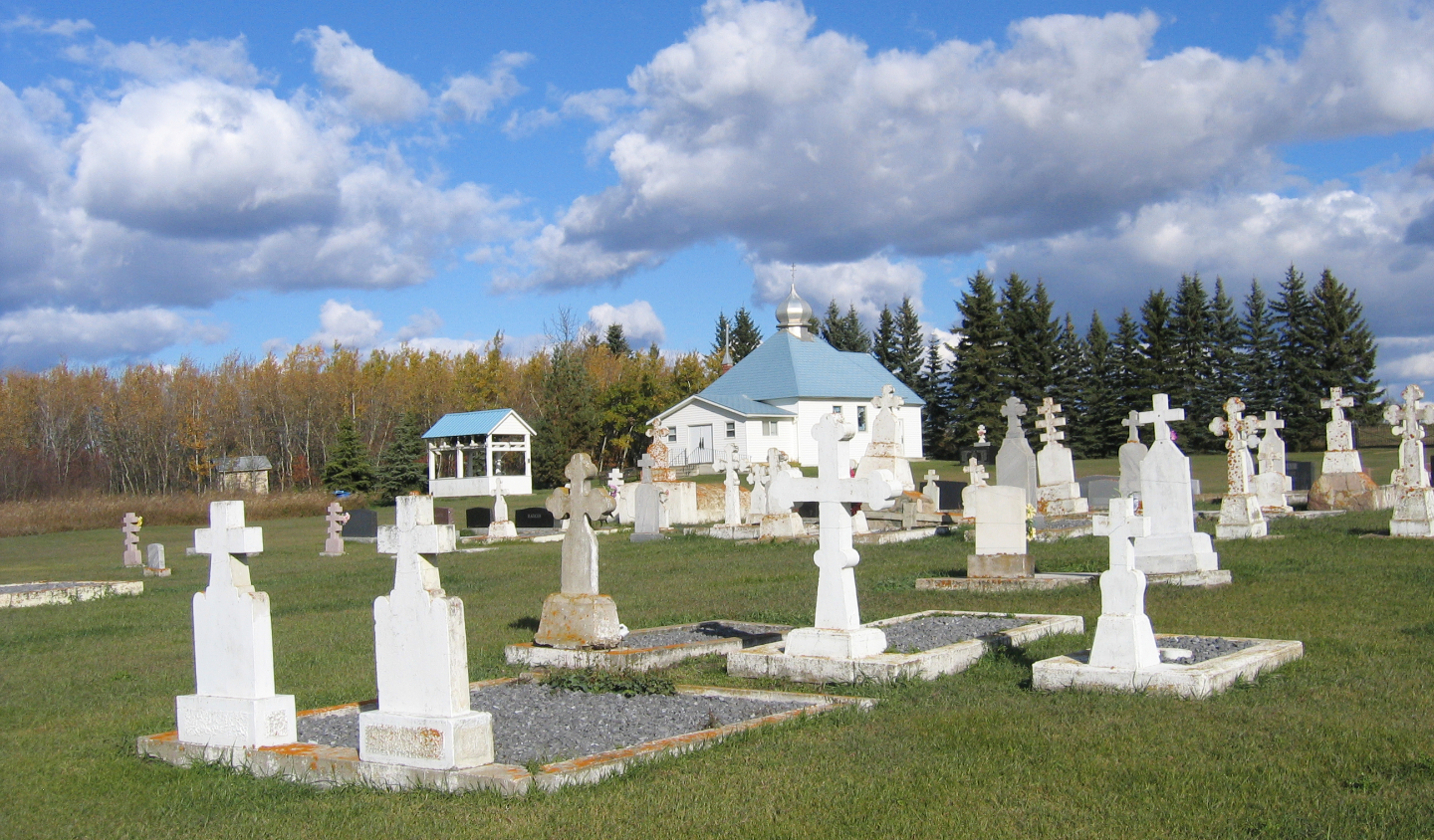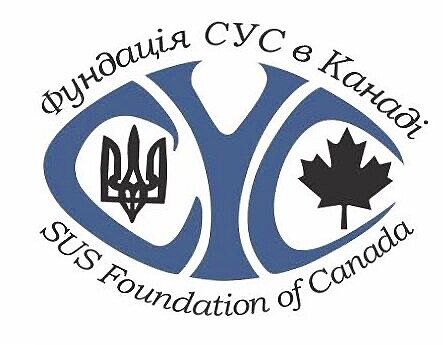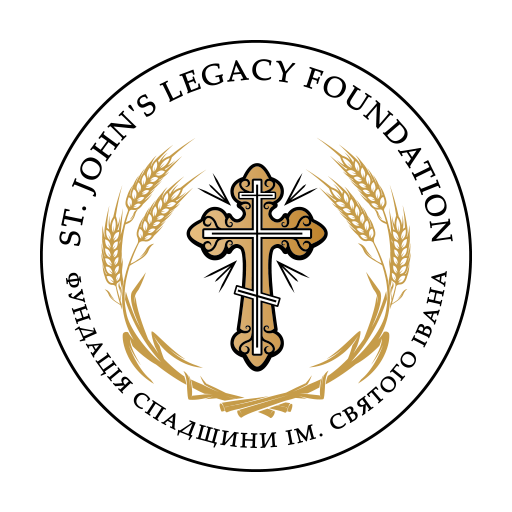The genesis of the Borowich congregation can be traced to the selection of a cemetery site by area homesteaders in 1902. That same year, a special Dominion land grant (No. 1179) was issued to the Russo-Greek Catholic Orthodox parish of Shandro, for the purpose of establishing a church and cemetery to serve the Borowich district. A Russo-Orthodox congregation had been organized at Shandro in 1900 and was then in the process of constructing its' own place of worship, St. Mary's Church. In 1903, thirty-five local settlers met in the home of Hryhory Kowalchuk to discuss building a sanctuary on the twenty acres of land that had recently been acquired, also electing an executive and trustees to initiate this undertaking.
Because no large trees were available nearby, the parishioners had to obtain them from woods that were twenty miles away, north of the Andrew townsite. During the winter of 1903-1904, suitable trees were harvested from this timber stand (northeast of the Kysylew Russo Orthodox Church), after which the logs were hauled by sleigh to old Andrew for squaring at the Oliver sawmill.
Construction began in the summer of 1904, with Oleksa Morris hired to supervise the project and Dionysy Lastiwka serving as his assistant. The 26’ x 44’ log structure rose slowly on a stone foundation, the work proceeding whenever parishioners had some free time to help the builders. In 1906 Michael Zukiwski put on siding to seal the exterior walls, and that winter he worked with Peter Gudsovaty and other members to finish the interior and build the altar. In the meantime, Reverend Antony Pechinsky, assisted by Reverends Kryskha, Gregory Soroka and Alexander Peza of the Russian Orthodox Mission blessed the church at a service held on 14 October 1906, the feast day of St. Mary the Protectress—who was adopted as the patron of the sanctuary. Subsequently, a series of Russian Orthodox priests provided pastoral care for the congregation in the decade that followed.
Although the Borowich Church had essentially been completed by the winter of 1906-1907, clear title to it was only obtained in 1910, once the structure had been examined by a government inspector. In 1908 a clarion set of four bells was donated to the congregation by member Nikolai Lukian, who spent a week hauling the bells from Fort Saskatchewan by an oxen-drawn sleigh. Records indicate that in 1911 the parish had 33 members, many of the founders having originally emigrated from the Ukrainian village of Borivtsi.
Not long after Fr. Ivan Kusey was posted to Alberta in June 1920, the congregation resolved to join the newly established Ukrainian Greek Orthodox Church of Canada. Apparently, Reverend Dr. Lazar Gherman subsequently helped to celebrate the first UGOC liturgy at Borowich, probably while visiting the Willingdon area in February 1921. The faithful of the Borowich community were thus pioneers in establishing a truly national Orthodox church among the Ukrainians of rural east central Alberta. Indeed, their sanctuary, having been built and consecrated in 1906, has the unique honour of being the oldest church structure belonging to the Ukrainian Orthodox Church in the province of Alberta.
With the construction of the CPR rail line through the very heart of the historic Ukrainian bloc settlement in 1928, the town of Willingdon sprang up along the tracks while Borowich was left in the countryside northeast of the new townsite. Almost immediately, residents of Willingdon began discussing building a church in town, but a full decade was to pass before the community was in a position to actually begin constructing what became the Holy Ghost Ukrainian Orthodox Church. Completed and blessed the following year, the church in Willingdon naturally became a focus of religious activity for much of the surrounding district, a situation that could only work to the ultimate detriment of St. Mary the Protectress church. Still, long-time members of the Pokrova congregation continued to remain loyal to their family sanctuary, and the Borowich cemetery became the burial ground used by many of the faithful in nearby Willingdon.
The Cemetery
Established in 1902 at the site of the future church, the first burial was that of John Tarangul, who died when he was kicked by a horse that he was shoeing.

Play Memory Eternal Chant
GPS Co-ordinates: 53.845508, -112.110012
Affiliation: Ukrainian Orthodox Church of Canada



 Financial support generously provided by:
Financial support generously provided by: 